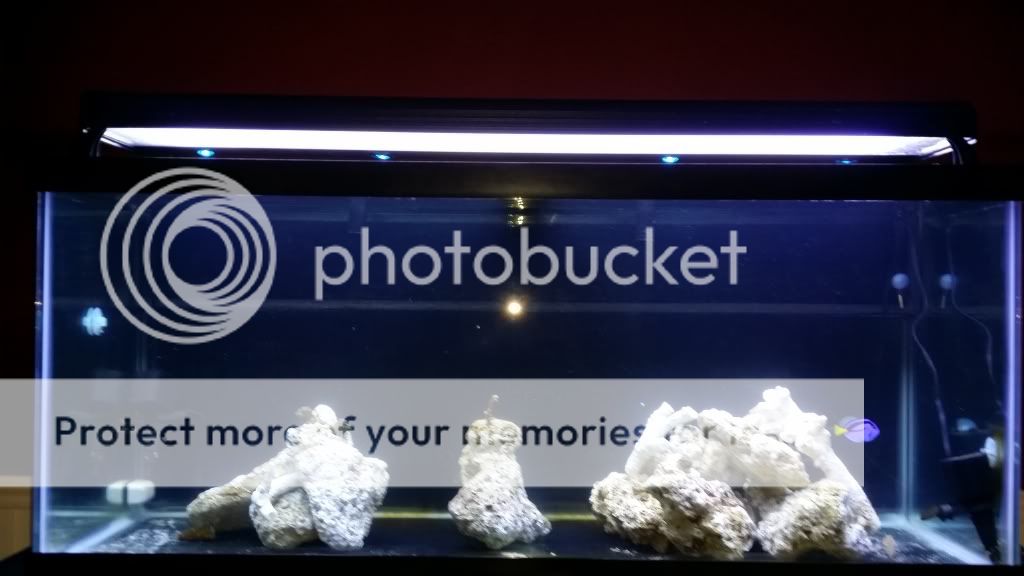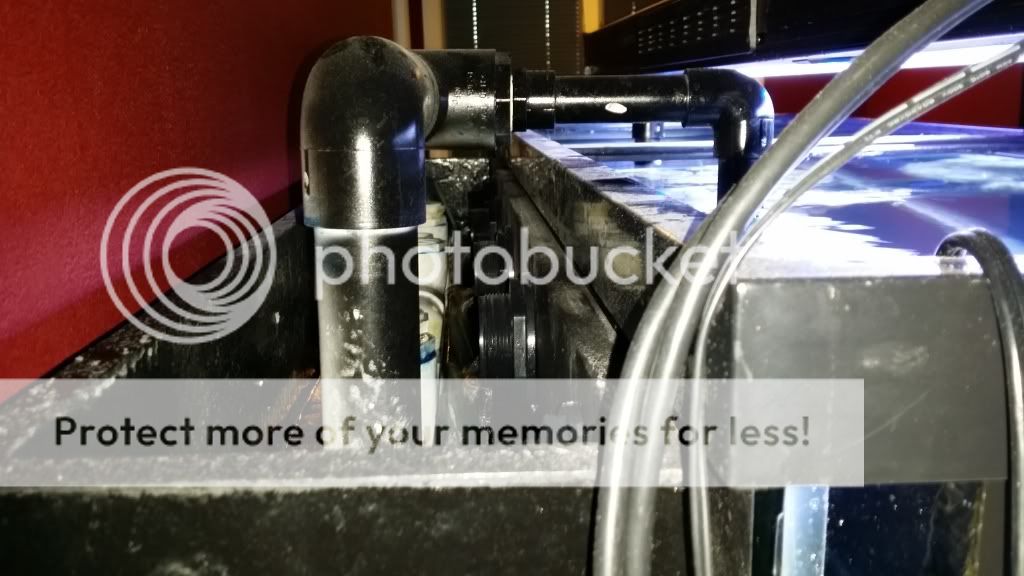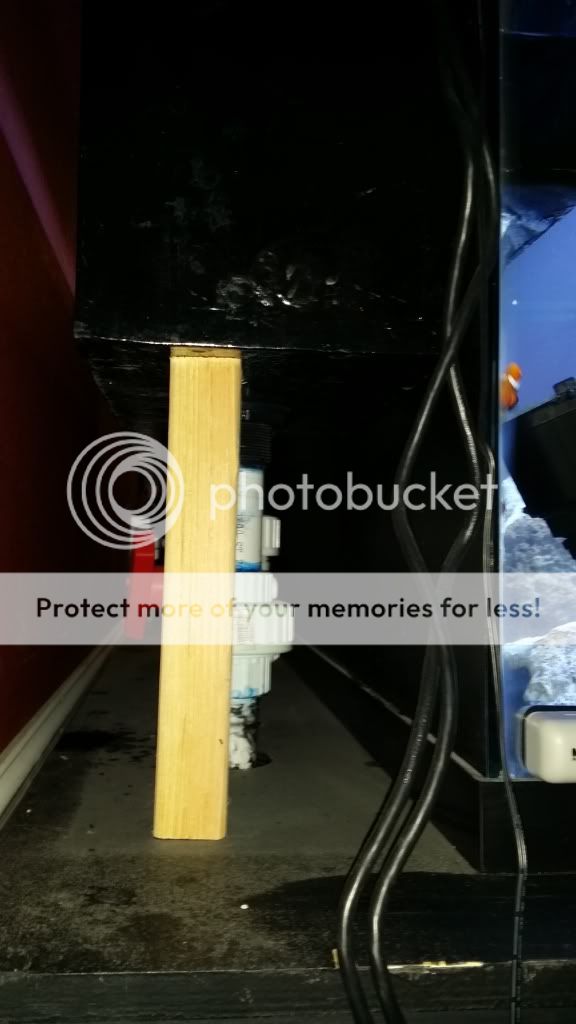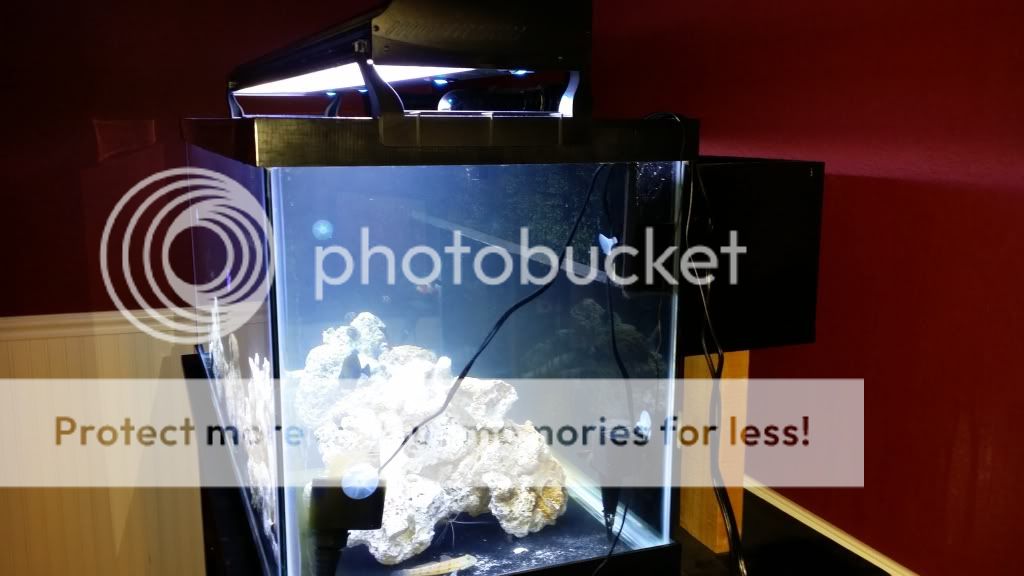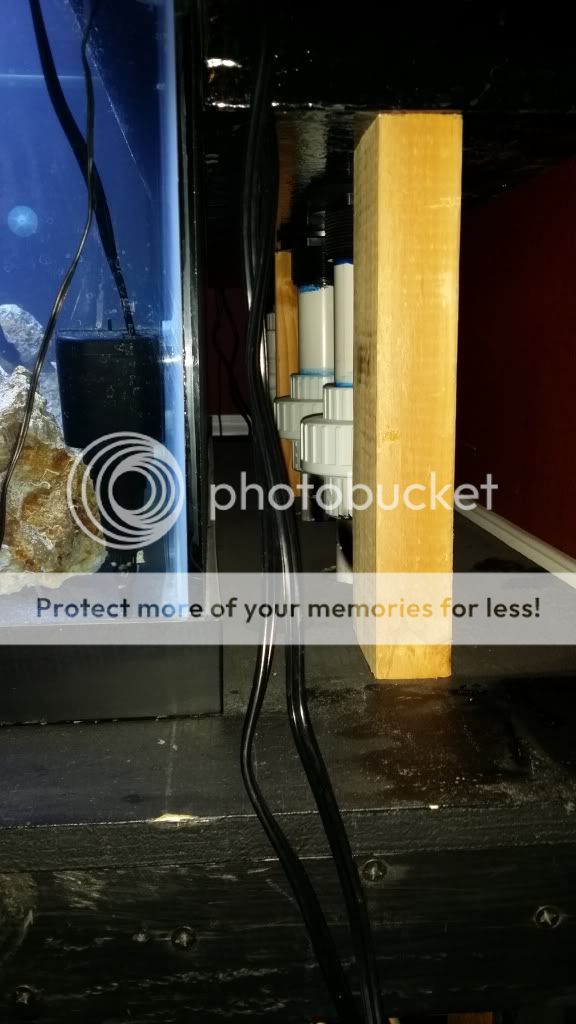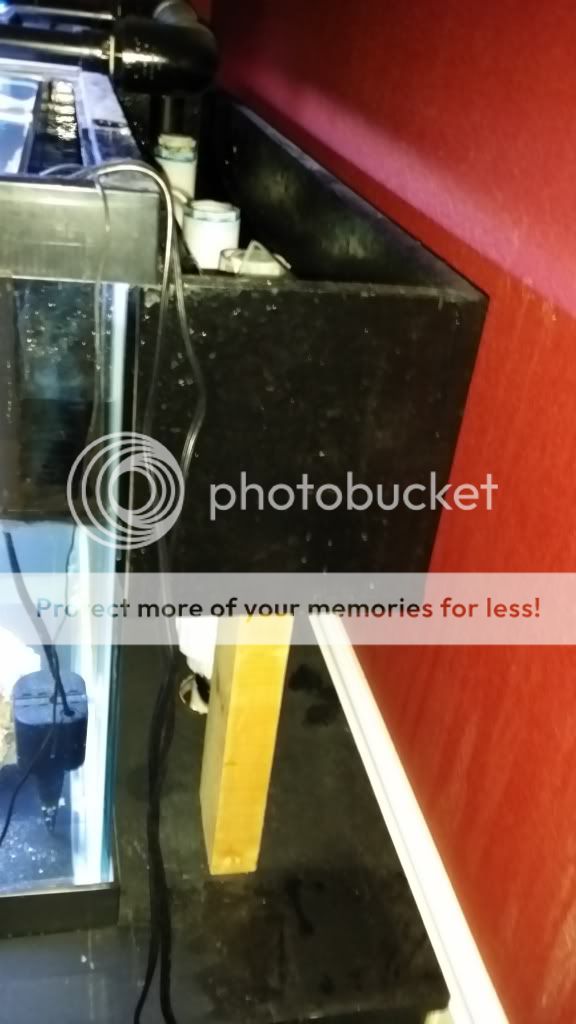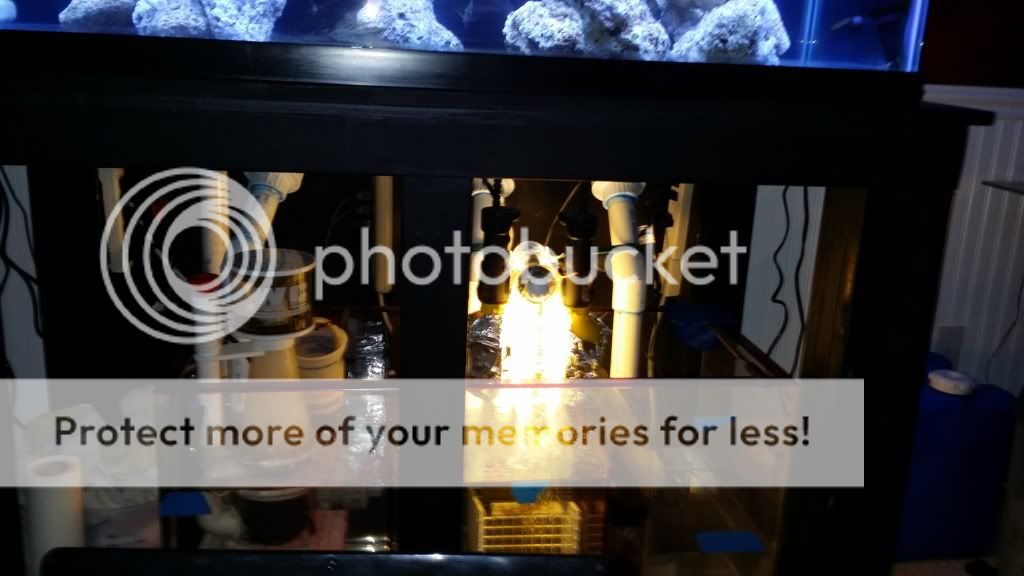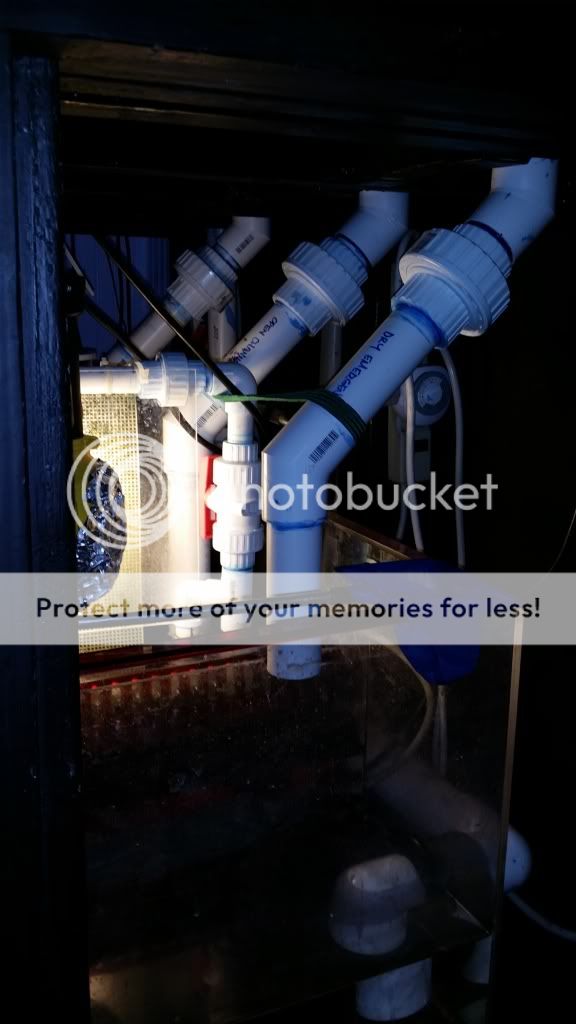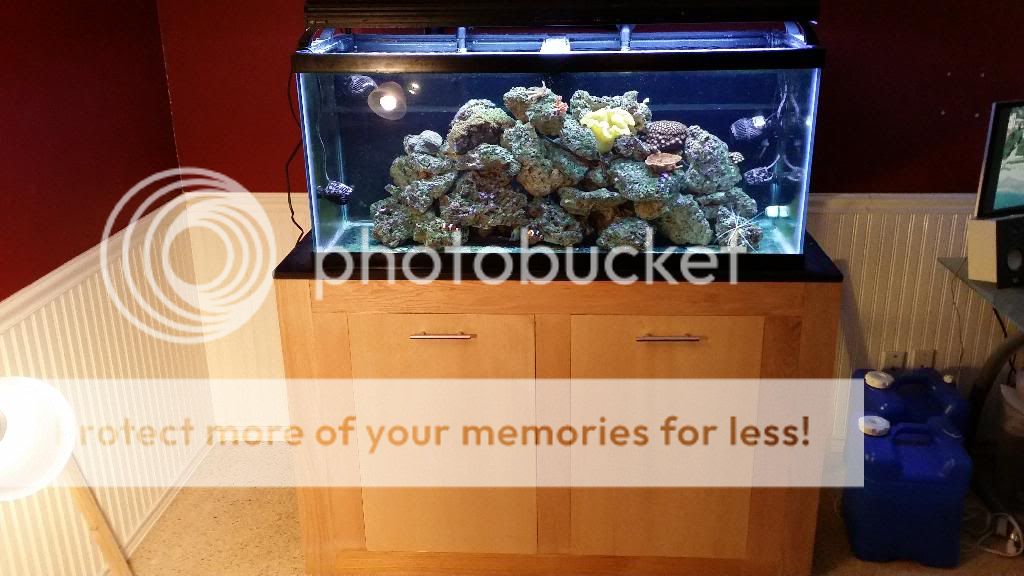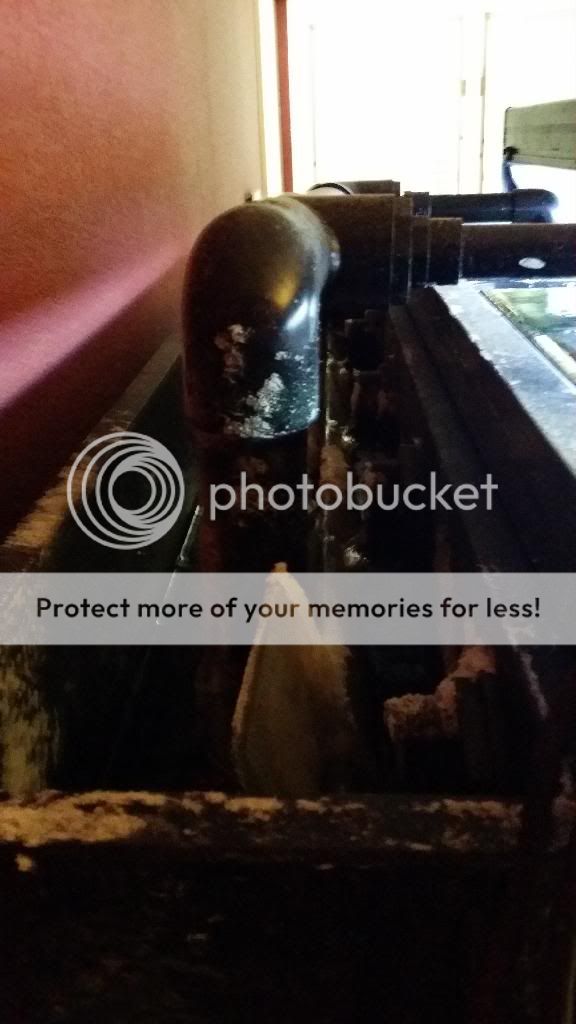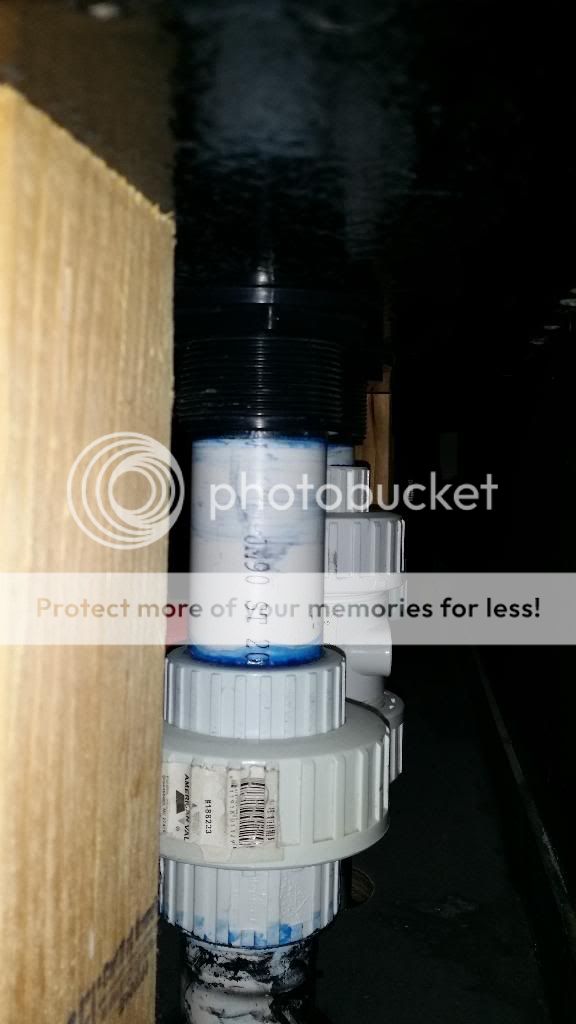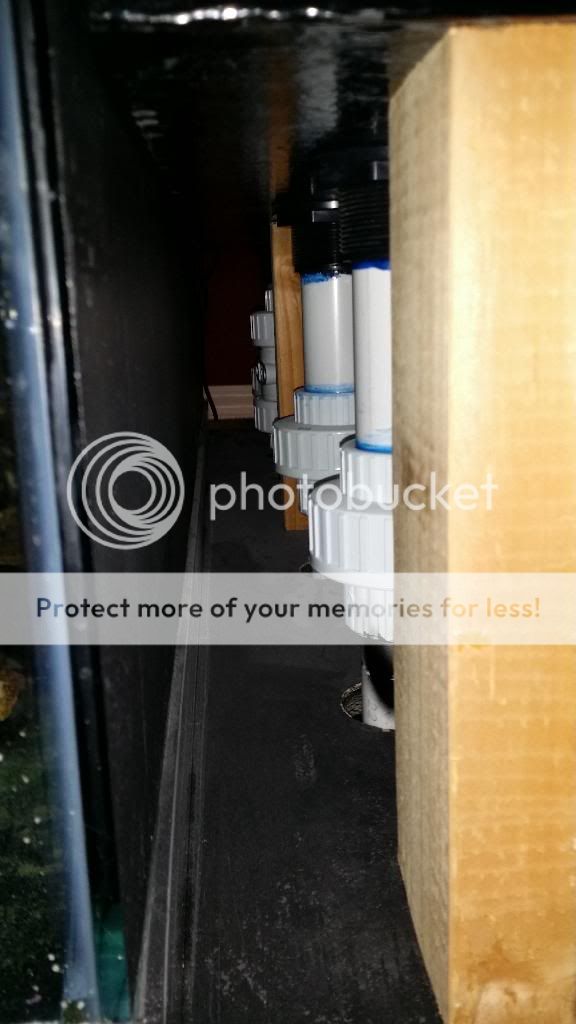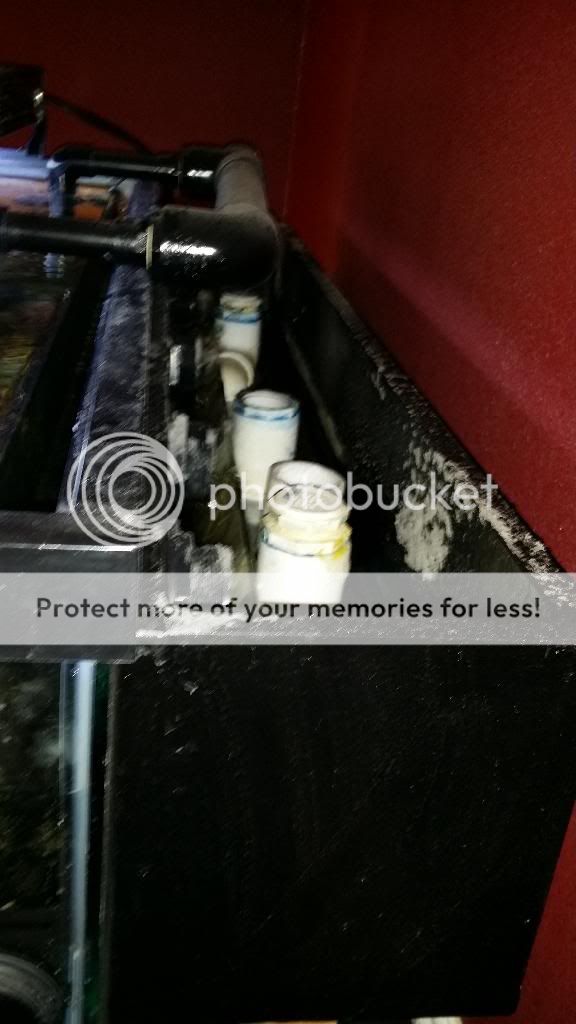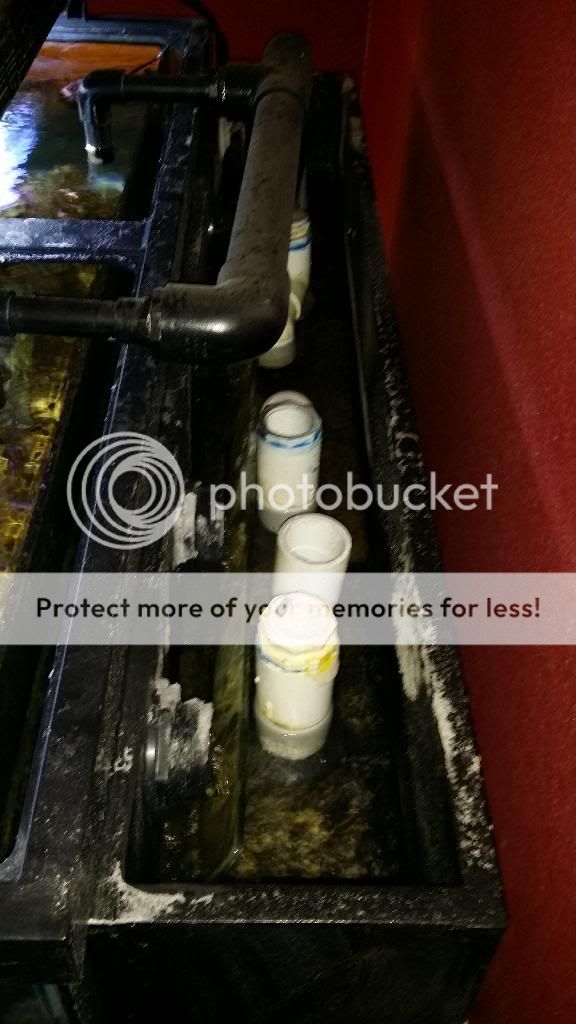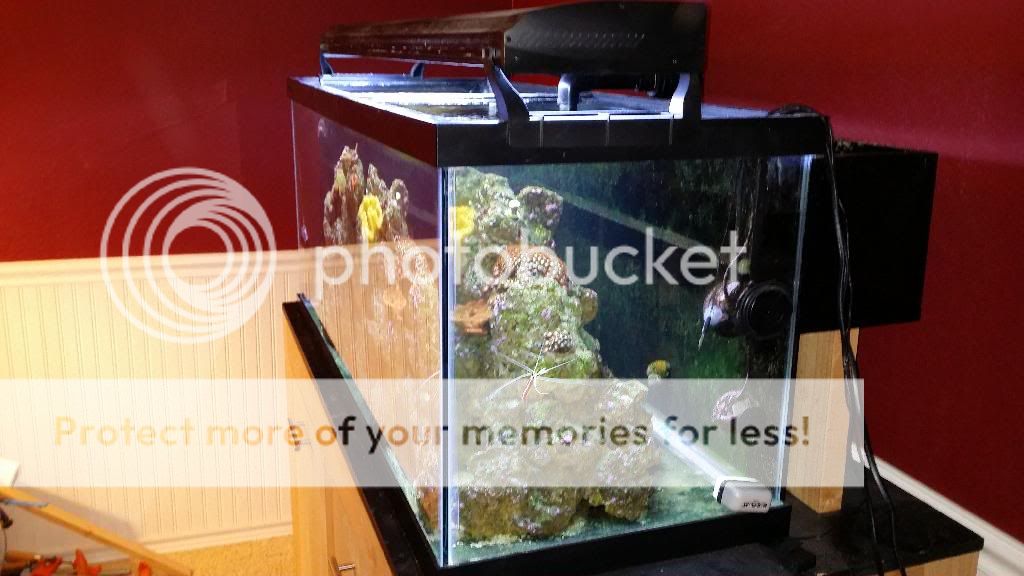Updated Mar. 22, 2014, with Pictures: About 7 Months Old and Going Strong!
Updated Mar. 22, 2014, with Pictures: About 7 Months Old and Going Strong!
I'm looking at doing an overflow soon for my tank (125g), I question the longevity of this idea. How's it holding up?
Thanks for your question, Chayos. As of today, March 22, 2014, there have been no problems, whatsoever. No leaks, no drips, and no cracks in the paint. The top surface of the stand beneath the box is gathering dust, but no water droplets. The outside surface of the box is dry as a bone. The inside surface of the box that is exposed to air is gathering salt-creep, but that has presented no problems at all. The water level in the external box stays level at about a third of the way up, and with the BeanAnimal design, there has never been a flood or overflow of water from the external box.
As you point out, I really like the slimmer profile of the coast-to-coast weir
inside the tank, which is made possible by the external overflow box,
outside of the tank. I am deeply comforted by the fact that the wooden, external box won't crack or chip like glass, no matter what happens, ever. (I have child who has historically tried to smack things against different parts of the tank or try to drop things in the tank. The thought of things bumping against the external box doesn't worry me as much as it would if it were made of glass.)
When you think of the paint on the external overflow box, think of really tough nail polish. That's what it is like. In the pictures below, see how shiny the black paint is. The hard-as-nail-polish epoxy seals the wood, and I am rather impressed by its rugged, water-proof quality. The seals between the overflow box and the back of the tank are water-tight. Yet, I was very careful when making the adjustments, for fear of over-tightening the bulkheads, with possible risk of cracking the back wall of the aquarium. But all went well; no worries there.
The only "problem" I have ever experienced with any of the two overflow boxes is that my Starry Blenny will sometimes jump into the internal, overflow box, sometimes making it as far as the external, overflow box. However, this is not really a "problem"; I scoop the confused Blenny out of either box with great ease (even the skinny box has room for a small fish net) and put the fish back in the tank.

Anyhow, good luck with your design. Keep us posted. I absolutely love the wooden, external box.
Here are photos of the entire setup, taken today:
Photo 1: Looking at the bare-bottom aquarium-set-up from the front, displaying my DIY stand with pop-out cabinet doors, the reef wall, and the unobtrusive, internal, overflow box, which is skinnier, front to back, with an external box behind it than it otherwise would be. That is the benefit, aesthetically, of using an external, overflow box in conjunction with an internal, overflow box. Now, I admit that the external, overflow box is a bit of an eyesore, when glancing at the setup from the side (see pictures below). However, I intend to house the external overflow box inside a rear canopy-hutch that will hide the external, overflow box and look like the a continuation of the aquarium stand. So there will be no eyesore, when I am done. I just haven't gotten around to that project yet.
Photos 2-3: Looking behind the tank from the left, beneath and above the wooden, external, overflow box. Note the salt-creep above the box on its edges, and how dry and dusty it is below, with no sign of leakage. This box will be covered from view by the canopy-hutch, when I am done. Note also that there is a slim piece of glass propped at an angle in the external, overflow box, to allow the water to cascade more quietly into the overflow box. (You can see it with gathered saltcreep.)
Photos 4-6: Looking behind the tank from the right, above and beneath the wooden, external, overflow box. Again, note how dry and dusty it is below and the salt-creep above, from evaporation, but that has caused no problems.
Photos 7-8: Looking from the right side. Note how skinny and unobtrusive the glass, internal box is from the side-profile view. By comparison, see how deep the wooden, external box is.
Note: there is no nuisance algae in this tank, thanks in part to the BB tank and the DIY, waterfall, algae turf scrubber (not pictured). What you seen as green matter on the walls and the floor of the aquarium is actually coralline algae, in its pre-purple stage; its hard and crusty.
All in all, I'm very happy with this tank.

